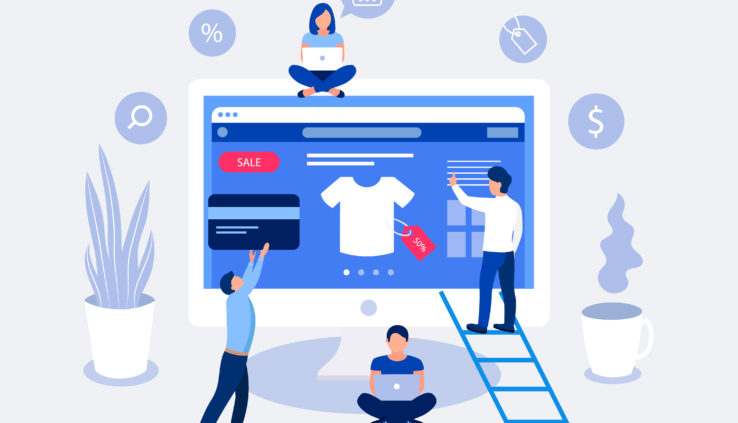E-commerce competition is fierce and consumer expectations are constantly evolving, ensuring the design of product pages holds significant importance for online businesses. Product pages serve as the digital storefronts where potential customers interact with products, make purchase decisions, and ultimately complete transactions. As such, implementing innovative and user-centric design strategies can greatly impact the effectiveness of these pages, leading to improved engagement, higher conversion rates, and increased revenue. In this comprehensive guide, we’ll explore various advanced techniques and design elements that e-commerce businesses can employ to elevate their product pages and drive better performance.
Understanding the Significance of Product Page Design
Before delving into advanced design strategies, it’s crucial to grasp why product page design is integral to e-commerce success. Online product pages serve as the primary touchpoints between consumers and products. They not only provide essential information about products but also shape consumer perceptions, influence purchasing decisions, and contribute to overall brand experience. A well-designed product page not only showcases the features and benefits of a product but also guides users seamlessly through the purchasing journey, instilling confidence and trust along the way.
Key Points:
- Product pages are pivotal touchpoints in the online shopping journey.
- Well-designed product pages contribute to positive user experiences.
- Design influences consumer perceptions and purchasing decisions.
Elements of Advanced Product Page Designs
- Interactive Product Visualization
Advanced product page designs leverage interactive visualization techniques to provide users with immersive and engaging experiences. Traditional static images are being replaced with dynamic 360-degree views, interactive videos, and virtual reality (VR) experiences, allowing consumers to explore products from every angle and gain a deeper understanding of their features and functionalities.
Key Points:
- 360-degree product views offer a comprehensive perspective.
- Interactive videos provide dynamic demonstrations and storytelling.
- VR experiences immerse users in a virtual environment for product exploration.
- Personalized Recommendations
Personalization is a cornerstone of effective e-commerce strategies, and product pages present an ideal opportunity to deliver tailored recommendations to users. By harnessing the power of data analytics, artificial intelligence (AI), and machine learning algorithms, businesses can analyze user behaviour, preferences, and past purchase history to offer personalized product recommendations that are highly relevant and compelling to each individual customer.
Key Points:
- Personalized recommendations enhance user engagement and drive sales.
- AI and machine learning enable dynamic content personalization.
- Recommendations based on browsing history and contextual data improve relevance.
- Social Proof and User-generated Content
Social proof elements such as customer reviews, ratings, and user-generated content play a vital role in influencing consumer trust and purchase decisions on product pages. By prominently featuring testimonials, ratings, and user-generated photos and videos, e-commerce businesses can build credibility, authenticity, and social validation, thereby encouraging potential buyers to make informed purchase decisions.
Key Points:
- Customer reviews and ratings provide social validation and build trust.
- User-generated content adds authenticity and credibility to product pages.
- Visual testimonials and customer photos enhance the shopping experience.
- Seamless Navigation and User Experience
A seamless and intuitive navigation experience is essential for guiding users through the product page and facilitating easy exploration of product features, specifications, and pricing information. Advanced design elements such as sticky navigation bars, quick view options, predictive search functionality, and AI-powered chatbots can enhance user experience, reduce friction, and streamline the purchasing journey.
Key Points:
- Sticky navigation bars ensure essential page elements remain accessible.
- Quick view options enable users to preview products without leaving the page.
- Predictive search and AI-powered chatbots provide personalized assistance.
- A/B Testing and Continuous Optimization
To ensure the effectiveness of product page designs, e-commerce businesses should employ A/B testing and continuous optimization techniques. By systematically testing different design elements, layouts, and content variations, businesses can gather valuable insights into user preferences and behaviour, identify areas for improvement, and iterate on their designs to maximize conversion rates and overall performance.
Key Points:
- A/B testing enables data-driven decision-making and optimization.
- Continuous monitoring and analysis help identify areas for improvement.
- Iterative design enhancements lead to ongoing performance optimization.
Innovative product page designs are integral to the success of e-commerce businesses, as they directly impact user engagement, conversion rates, and revenue generation. By incorporating advanced visualization techniques, personalized recommendations, social proof elements, seamless navigation experiences, and continuous optimization strategies, businesses can create compelling product pages that resonate with consumers and drive meaningful results. As the e-commerce landscape continues to evolve, staying abreast of emerging trends and adopting innovative design practices will be essential for maintaining a competitive edge and sustaining long-term success.
To learn more about how geekspeak Commerce can help you implement advanced product page designs and optimize your e-commerce performance, contact us today.
